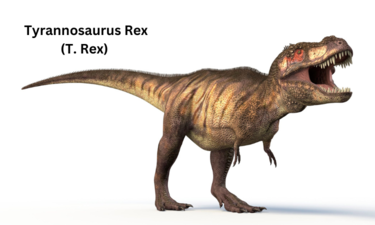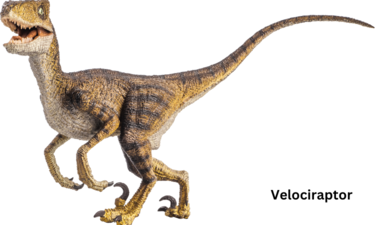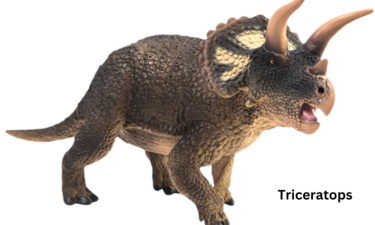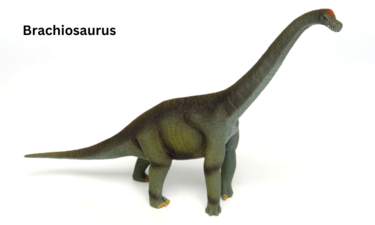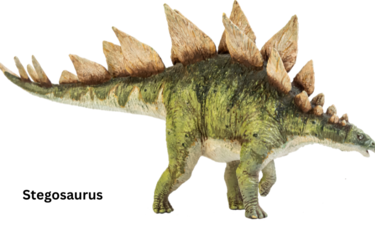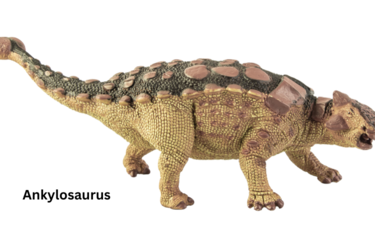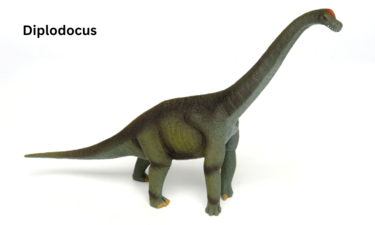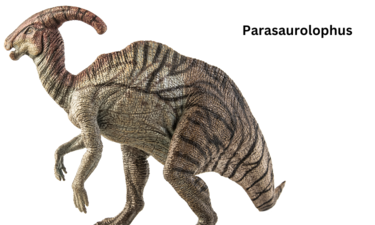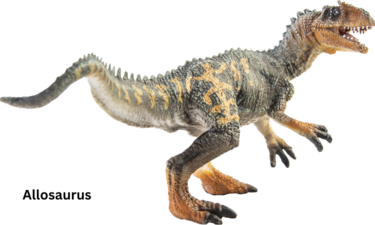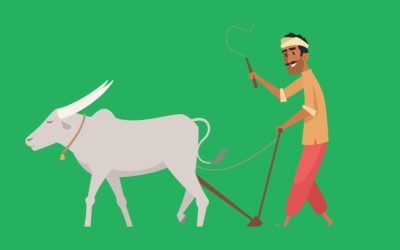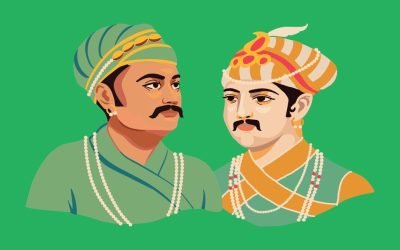Explore The Types Of Dinosaurs With Pictures
Dinosaurs, those magnificent creatures that once roamed the Earth millions of years ago, have captured our imagination for decades. From the towering predators to the gentle giants, each dinosaur species had its unique traits and played a role in the prehistoric world. Let’s take a journey back in time and explore 10 fascinating types of dinosaurs with pictures, complete with pictures and interesting details.
Watch The 10 Types of Dinosaurs
You can watch this video to know about the ten types of dinasours:
Let’s now explore the 10 types of dinosaurs with pictures.
1. Tyrannosaurus Rex
Tyrannosaurus Rex, often called T. rex, was a fearsome predator known for its sharp teeth and tiny arms. It lived during the Late Cretaceous period and could reach lengths of up to 40 feet, weighing around 9 tons. Believed to be one of the largest land carnivores ever, the T. rex was an apex predator.
Features: Large, powerful predator with sharp teeth, small arms, and strong legs.
Habitat: Lived in diverse environments, from forests to open plains.
Role: Apex predator at the top of the food chain, likely hunted large herbivores for food.
Facts About T. Rex
- Often called T. rex, it was a fearsome predator with sharp teeth and tiny arms.
- Lived during the Late Cretaceous period.
- Could reach lengths of up to 40 feet and weigh around 9 tons.
- Believed to be one of the largest land carnivores ever.
2. Velociraptor
Velociraptor, made famous by movies like “Jurassic Park,” was a small but agile predator. It lived during the Late Cretaceous period and was about the size of a turkey, much smaller than its cinematic portrayal. It likely hunted in packs, using its sharp claws for hunting.
Features: Agile, bird-like dinosaur with a distinctive sickle-shaped claw on its foot.
Habitat: Inhabited forests and grasslands.
Role: Agile hunter that likely hunted in packs, using its sharp claws to take down prey.
Facts About Velociraptor
- Known for its sharp claws and depiction in movies like “Jurassic Park.”
- Lived during the Late Cretaceous period.
- About the size of a turkey, much smaller than portrayed in movies.
- Likely hunted in packs for better success.
3. Triceratops
Triceratops is recognizable by its three facial horns and bony frill. It lived during the Late Cretaceous period and was a herbivorous dinosaur that could grow up to 30 feet in length. The horns were possibly used for defense against predators, and its size made it a prominent presence in its ecosystem.
Features: Herbivorous dinosaur with a massive frill, three facial horns, and a robust body.
Habitat: Roamed plains and forests.
Role: Herbivore that browsed on vegetation, possibly used horns for defense against predators.
Facts About Triceratops
- Recognizable by its three facial horns and bony frill.
- Lived during the Late Cretaceous period.
- Herbivorous dinosaur that could grow up to 30 feet in length.
- Believed to have used its horns for defense against predators.
4. Brachiosaurus
Brachiosaurus, known for its long neck and large body, lived during the Late Jurassic period. Its tall, giraffe-like stance allowed it to feed on vegetation high in trees. As one of the largest dinosaurs, it reached lengths of around 85 feet and played a crucial role in its habitat.
Features: Long-necked herbivore with a tall body, long front legs, and shorter hind legs.
Habitat: Thrived in forests and woodlands.
Role: Fed on high vegetation, contributing to shaping plant life in its ecosystem.
Facts About Brachiosaurus
- Known for its long neck and large body.
- Lived during the Late Jurassic period.
- Had a tall, giraffe-like stance, allowing it to feed on vegetation high in trees.
- One of the largest dinosaurs, reaching lengths of around 85 feet.
5. Stegosaurus
Stegosaurus, with its double row of large bony plates along its back, lived during the Late Jurassic period. The spikes on its tail were likely used for defense, and it was a herbivorous dinosaur that could grow up to 30 feet in length. Its unique appearance sets it apart from other dinosaurs.
Features: Herbivorous dinosaur with double rows of bony plates on its back and spikes on its tail.
Habitat: Inhabited woodlands and plains.
Role: Possibly used plates for temperature regulation, display, and spikes for defense against predators.
Facts About Stegosaurus
- Recognizable by its double row of large bony plates along its back.
- Lived during the Late Jurassic period.
- Had spikes on its tail, which it likely used for defense.
- Herbivorous dinosaur that could grow up to 30 feet in length.
6. Ankylosaurus
Ankylosaurus, a dinosaur with heavy armor plating and a club-like tail, lived during the Late Cretaceous period. Its bony armor and tail weapon served as protection against predators. This herbivorous dinosaur, reaching lengths of up to 30 feet, was a formidable presence in its ecosystem.
Features: Armored dinosaur with bony plates and a club-like tail.
Habitat: Found in forests and plains.
Role: Utilized its armor and tail as protection against predators, while feeding on vegetation.
Facts About Ankylosaurus
- Dinosaur with heavy armor plating and a club-like tail.
- Lived during the Late Cretaceous period.
- Protected itself from predators with its bony armor and tail weapon.
- Herbivorous dinosaur that reached lengths of up to 30 feet.
7. Pteranodon
Pteranodon, although not a dinosaur but a flying reptile from the same era, lived during the Late Cretaceous period. With a wingspan of up to 30 feet, it was an impressive flyer that likely fed on fish and other small prey. Its ability to soar the skies added a different dimension to the prehistoric world.
Features: Large flying reptile with a long crest and wingspan.
Habitat: Patrolled the skies over oceans and coastal areas.
Role: Soared above the seas, likely feeding on fish and small prey.
Facts About Pteranodon
- Not a dinosaur, but a flying reptile from the same era.
- Lived during the Late Cretaceous period.
- Had a wingspan of up to 30 feet, making it an impressive flyer.
- Pteranodons likely fed on fish and other small prey.
8. Diplodocus
Diplodocus, known for its long neck and tail, lived during the Late Jurassic period. Among the longest dinosaurs, it could grow up to 90 feet in length. This herbivorous giant grazed on vegetation, contributing to shaping the plant life in its environment.
Features: Long-necked, long-tailed herbivore with a whip-like tail.
Habitat: Roamed open plains and woodlands.
Role: Grazed on low-lying vegetation, contributing to shaping plant communities.
Facts About Diplodocus
- Known for its long neck and tail.
- Lived during the Late Jurassic period.
- One of the longest dinosaurs, with lengths of up to 90 feet.
- Likely a herbivore that grazed on vegetation.
9. Parasaurolophus
Parasaurolophus, recognizable by its hollow crest on its head, lived during the Late Cretaceous period. This herbivorous dinosaur could reach lengths of around 40 feet and is believed to have lived in herds. The purpose of its distinctive crest remains a subject of scientific inquiry.
Features: Herbivorous dinosaur with a distinctive hollow crest on its head.
Habitat: Lived in forested areas and plains.
Role: The crest possibly played a role in communication and display among individuals.
Facts About Parasaurolophus
- Recognizable by its hollow crest on its head, possibly used for communication.
- Lived during the Late Cretaceous period.
- Herbivorous dinosaur that could reach lengths of around 40 feet.
- Believed to have lived in herds.
10. Allosaurus
Allosaurus, a large carnivorous dinosaur with sharp teeth, lived during the Late Jurassic period. It hunted other dinosaurs and could grow up to 40 feet in length. As a top predator of its time, the Allosaurus played a crucial role in maintaining the balance of the ecosystem.
Features: Large carnivorous dinosaur with sharp teeth and powerful jaws.
Habitat: Roamed various environments, including forests and open areas.
Role: Apex predator that hunted other dinosaurs, possibly even the large herbivores.
Facts About Allosaurus
- Large carnivorous dinosaur with sharp teeth.
- Lived during the Late Jurassic period.
- Hunted other dinosaurs, possibly even the herbivorous giants like Brachiosaurus.
- Allosaurus could grow up to 40 feet in length.
Why did the dinosaurs become extinct?
The extinction of dinosaurs is widely attributed to a significant event around 65 million years ago called the Cretaceous-Paleogene (K-Pg) extinction event. This event caused the extinction of numerous species, including non-avian dinosaurs.
The prevailing hypothesis is that a massive asteroid impact, possibly near the Yucat├бn Peninsula in present-day Mexico, triggered devastating consequences such as wildfires, tsunamis, and a “nuclear winter” effect, disrupting the global climate.
This disruption led to widespread habitat changes and a decline in the availability of food sources, ultimately resulting in the extinction of many species, including dinosaurs. Other factors like volcanic activity and changing sea levels might have played a role as well.
Also know: 20 Wild Animals Name
Top 10 FAQs About Dinosaurs
1. When did the Tyrannosaurus Rex live?
Ans. T. rex lived during the Late Cretaceous period.
2. What’s unique about Velociraptor?
Ans. Velociraptor had a sharp claw on its foot and likely hunted in packs.
3. What’s special about Triceratops?
Ans. Triceratops had three facial horns and a bony frill, possibly used for defense.
4. What’s notable about Brachiosaurus?
Ans. Brachiosaurus had a long neck and fed on tall vegetation.
5. Why is Stegosaurus famous?
Ans. Stegosaurus had double rows of bony plates along its back and spikes on its tail.
6. How did Ankylosaurus defend itself?
Ans. Ankylosaurus had heavy armor and a club-like tail for protection.
7. Was Pteranodon a dinosaur?
Ans. No, Pteranodon was a flying reptile from the same era.
8. What’s interesting about Diplodocus?
Ans. Diplodocus had a long neck and tail, used for reaching vegetation.
9. What’s unique about Parasaurolophus?
Ans. Parasaurolophus had a hollow crest on its head, possibly for communication or display.
10. What are some famous types of dinosaurs?
Ans. Tyrannosaurus Rex, Velociraptor, Triceratops, Brachiosaurus, Stegosaurus, Ankylosaurus, Pteranodon, Diplodocus, Parasaurolophus, and Allosaurus.
Also know: Why Do Fishes Die When Taken Out Of Water
Final Thought
Exploring these diverse types of dinosaurs with pictures gives us a glimpse into the incredible variety of life that existed millions of years ago. From mighty predators to gentle herbivores and even flying reptiles, these creatures shaped the ancient world in ways we can only imagine. The study of dinosaurs continues to captivate scientists and enthusiasts alike, helping us understand the Earth’s history and the evolution of life on our planet.
Search
Categories
- All Reviews (6)
- Amazing Facts (21)
- Computer Accessories (2)
- Dell Laptops (1)
- Drones (1)
- Educational Resources for Kids Crew (21)
- English Stories (10)
- Hindi Stories (9)
- Kids Stories (18)
- Kidz Crew (32)
- Laptop Products (1)
- Wireless Devices (2)
Recent Posts
- Monkey and Crocodile Story with Moral
- Best Short Bedtime Stories for Children
- The Story of the Poor Farmer with Moral
- рдЧрд░реАрдм рдХрд┐рд╕рд╛рди рдХреА рдХрд╣рд╛рдиреА (Garib Kisan Ki Kahani)
- рдЬрд┐рдВрджрдЧреА рдмрджрд▓ рджреЗрдиреЗ рд╡рд╛рд▓реА рдкреНрд░реЗрд░рдгрд╛рджрд╛рдпрдХ рдХрд╣рд╛рдиреА (Motivational Story in Hindi)
